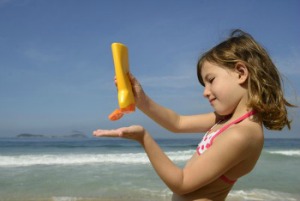
2014-03-14 14:49:37
Heating Up Global Sun Care Sales
2014-03-14 14:49:37
By Karine Dussimon, senior packaging analyst, Euromonitor International
 The author, Karine Dussimon, senior packaging analyst at Euromonitor International. |
Within beauty and personal care, sun care offers some of the best prospects for global packaging volume sales.
Although China’s sun care packaging volumes will surpass those of the U.S. over the course of the forecast period, and Brazil boasts a similarly strong growth outlook - rising incomes in emerging countries and warmer weather will, however, not be the only drivers behind this expected performance.
In spite of economic turmoil, shoppers in both maturing and saturated regions will continue to value functionality, but also a better consumer experience in sun protection and after-sun products, both of which brand owners will need to continue to address through packaging and closure innovation.
The Quest for Pack Functionality Gives Pumps a Push
The global sun care packaging marketplace, which largely consists of sun protection and after-sun products, is dominated by plastic dispensing closures fitted on HDPE bottles, squeezable plastic tubes and PET bottles.
In 2013, global volume sales of this closure type amounted to 407 million units. This was two and a half times the number of plastic screw closures, indicating the underlying significance of functionality when it comes to applying a sun care product.
 Sun care packaging must be functional for the whole family. |
Ease of use is becoming ever more essential to sun care product and packaging success.
By 2018, pump closures are set to be better performers than both plastic dispensing and plastic screw closures, with a forecast CAGR of 5%.
Pump closures, global sales of which amounted to 137 million units in 2013, are generally considered efficient both in terms of controlling dosage and limiting mess and spillage.
This will play a particularly important role in emerging regions such as Asia Pacific and Latin America where the HDPE bottle, with its large sizes, caters for both family consumption and value-for-money needs, with the pump closure set to act as a differentiator in terms of level of convenience offered.
Health and Wellness in Mature Countries to Trigger Closure Innovation
Sun care pumps will do equally well in the much more mature North American and Western European markets.
In 2013, Switzerland saw, for example, the arrival of La Roche Posay’s Anthelios Sonnenschutz-Öl LSF 50+ sun protection product in a 200ml PET bottle equipped with a spray pump. However, more than the search for greater functionality, the pump closure will meet another type of consumer demand in these regions - that of higher quality standards.
Despite challenging economic conditions, health and wellness is playing an increasingly important part in consumers’ purchasing decisions in beauty and personal care, and in particular in skin care and sun care. Shoppers in developed countries are increasingly seeking more natural properties from their sun care products as well as an enhanced consumer experience. Just as in skin care, consumers are often willing to pay for this added value as long as it is clearly perceived as such.
Airless technology responds to a desire for more natural products in that it reduces the need for artificial preservatives in the product formula. As a result, pump closures are experiencing a sharp increase in usage in sun care, particularly in the U.S. but also in Western European countries such as the UK and Spain.
Don't Underestimate the Potential of Aerosol Sprays
With regard to the consumer experience, sun care brand owners are choosing to develop their product ranges both by adding attributes such as water resistance or suitability for sensitive skin and better catering to specific users such as children and those engaged in sports.
Given this strategy, pumps are not the only closures that are set to benefit in the coming years. Aerosol sprays on metal aerosol cans offer interesting prospects, albeit from a lower unit volume base.
Usage of aerosol sprays in sun care is predicted to increase by 4% over the forecast period. Aerosol sprays are enabling product manufacturers to combine ease of use with good control over dosage and application and even new possibilities in terms of product formulation.
Aerosol sprays have the greatest presence across North America, where liquid products are also becoming increasingly popular compared to lotion sun care products. They will also likely perform well in Latin America.
Further consumer segmentation is opening doors for new product releases targeting children and babies, where product formulation and packaging development go hand in hand.
This is the case of foaming products dispensed through aerosol sprays which are meant to be fun to use, as offered, for example, by Merck & Co Inc in the U.S. with Coppertone Kids Wacky Foam SPF 75+ Sunscreen in a 170ml size.
The Opportunities for Innovation
As in skin care, the sun care category boasts some valuable opportunities for packaging and closure innovation and volume sales increases.
Success will likely not come without research and development activity, which aims to respond to the requirements of functionality and positive consumer experience. However, this will only be achieved if the retail price is justified by these added benefits in the eyes of consumers.
LinkedIn




